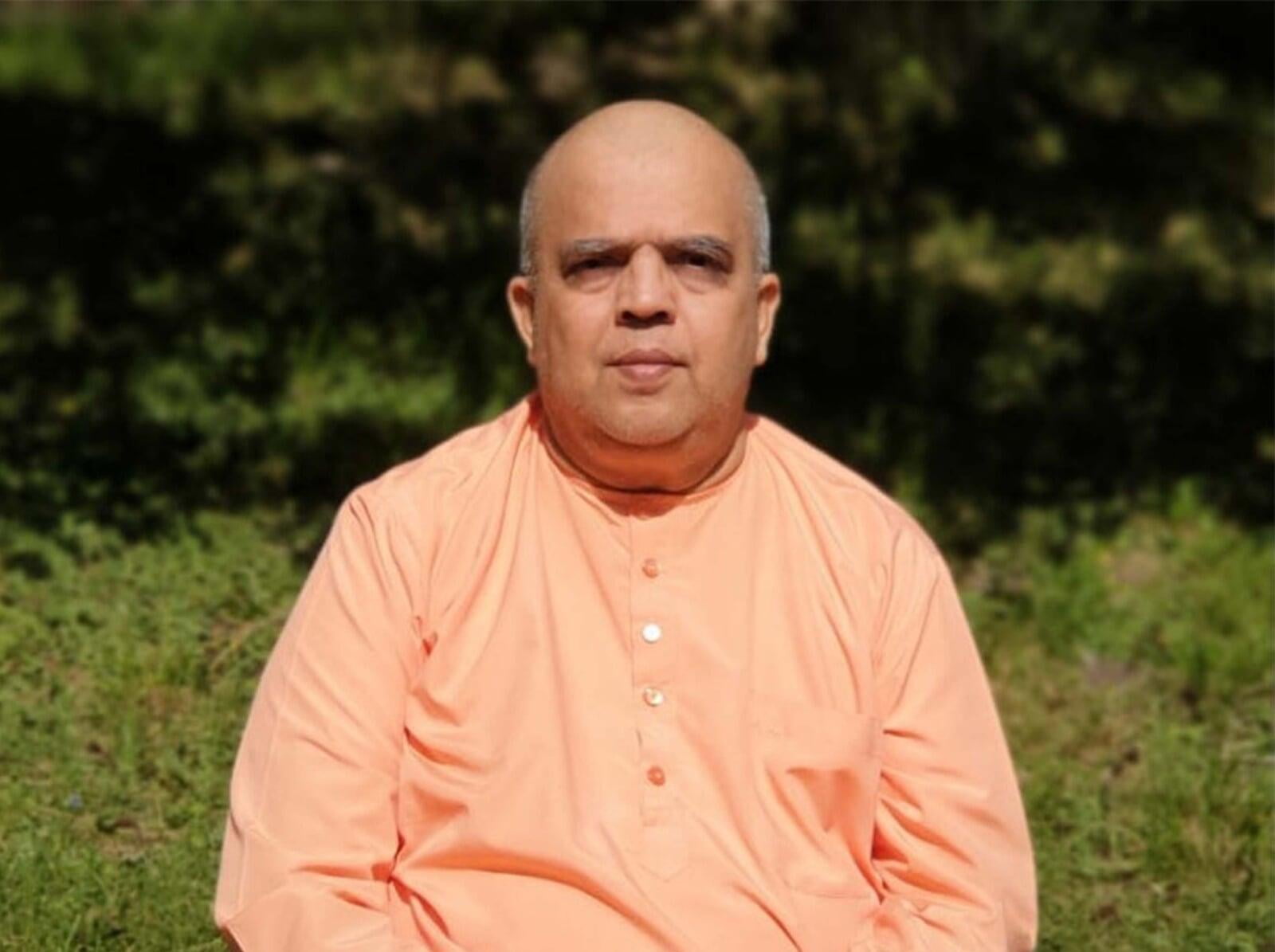RAMAKRISHNA VEDANTA CENTRE - A BRIEF HISTORY
Sri Ramakrishna's work in England started on 10 September 1895 when Swami Vivekananda visited the country for the first time and stayed there for nearly eleven weeks. He had the firm conviction that if the message of Sri Ramakrishna was given in England, the centre of the then vast British empire, then it would very easily spread across the world. In his three visits to that country, he stayed there for nearly 297 days and later observed, 'In England my work is really splendid.' After him, two more direct disciples of Sri Ramakrishna worked in this country. They were Swami Saradananda and Swami Abhedananda. Of the second generation monks of the Ramakrishna Order, the first two who visited and lectured here were Swami Paramananda and Swami Yatiswarananda. But their stay was short and temporary.
In October 1934, Swami Avyaktananda was the first monk who was sent by the Ramakrishna Order to start a centre here. He succeeded in gaining ground and established the London Vedanta Society in 1935. But in 1949, he dissociated himself from the Order because of his association with the Marxist ideology which he started preaching openly in the name of 'Spiritual Communism". Meanwhile, Swami Ghanananda arrived in England in October 1948 from Mauritius on his way back to India from the United States, where he had gone after nine months of preaching tour of South Africa. He wanted to stay there only for a few weeks until a passage could be booked, but being invited by some people interested in Vedanta, he started preaching informally at 8, Belsize Avenue in the north of London from the very next month. In view of Swami Avyaktananda's resignation from the Order, Swami Ghanananda was therefore asked by the Belur Math authorities to continue that work and the organisation was named the Ramakrishna Vedanta Centre. For the next twenty years, Swami Ghanananda's life and the history of the centre became one and the same.
Swami Ghanananda was born of a very orthodox Brahmin family on 26 October 1898 just before the annual festival of Mother Kali in a small village near Trivandrum, Kerala. He was named Mahadevan in honour of Shiva, the family deity. He had his school and college education in his native place and Trivandrum respectively. After completing post-graduation from Madras University, he joined the Ramakrishna Order at Madras in the year 1921. He was initiated by Swami Shivananda and was ordained into sannyasa by him in 1924. While undergoing initial training at Madras Math, he worked as the Joint- editor of the magazine Vedanta Kesari in 1925-26. Thereafter, he supervised the extensive educational work of the Ramakrishna Mission in Sri Lanka and subsequently appointed in 1931 the first head of the Colombo Centre in which post he continued for one year. On different occasions he was called by the authorities for emergency operations, like: flood relief in Coimbatore (1924), cyclone relief in Nellore district (1927), earthquake relief in Bihar (1934) and cyclone relief in Guntur district (1936).
Swami Ghanananda's next assignment fixed by the authorities was at Mauritius in 1939 where a large Hindu population after the birth centenary celebrations of Sri Ramakrishna in 1936 requested the Order through their representative to send a monk to that country. Swami Ghanananda was found to be capable to take this challenge with his strong intellectual and spiritual background. The first public reception in honour of Swami Ghanananda was held on 30 July 1939 and it was well attended. His emphasis in his speech on that day on Vedanta mahabakya 'thou art that' and 'on the immortality of the soul and oneness of mankind' evoked tremendous and spontaneous response to sow the seed of the movement in that country. Swami Ghanananda gave lectutres not only in urban areas but also spread the message of Ramakrishna-Vivekananda in the village of rural Mauritius where he gave talks on the Ramayana and the Gita. In 1940, the first campus of the centre was established in the village of St. Julien D'Hotman where he went first at the invitation of 'Sanatana Dharma Sammelan Sabha'. Later in 1942, the main centre was built with the purchase of a property at Vacaos, while the first campus remained as a sub-centre. During his very fruitful stay of six-and-a-half years in Mauritius, Swami Ghanananda by his oratory and organisational skill made a permanent impression on thousands of devotees and well-wishes of the Ramakrishna movement in that country. He left Mauritius in December 1946 and eventually landed in England in October 1948. During this interim period, he gave many lectures in South Africa in his short stay there for eight months in 1947; and also in America where during 1947-48, he assisted the monks of different centres in their work. While visiting the San Francisco centre, he was plagued seriously by some stomach trouble, probably ulcer. Then his host Swami Ashokananda got him examined by his own physician who diagnosed it to be a case due to his habit of excessive fasting and consequent undernourishment. It has been said that Swami Ashokananda in his own affectionate style upbraided him, 'Stop acting like a holy man and start eating! "Food is Brahman!". His health soon improved.
Swami Ghanananda, who arrived in the U.K in 1948 quickly laid the foundations of the Centre at a public meeting held in St Ermin’s Hotel on Sunday 14th November 1948 where “it was unanimously decided that a Vedanta Centre named after Sri Ramakrishna be begun and that lectures and classes and other usual forms of activity be commenced as from the Thursday following, 18th November 1948".
Initially, he stayed with a friend in his house at 8 Belsize Park in north-west London and began his work. A subsequent meeting of friends and well-wishers was called by the Swami in this apartment on Thursday 1st March 1949 to set up an Advisory Board. The Advisory Board met again on Saturday 12th March 1949 at Kingsway Hall, Holborn, London where it was resolved that an official society called the Ramakrishna Vedanta Centre be formed, and that a draft constitution be prepared; it was formally adopted on 17 June 1949. In the early years, the Centre had no permanent home. The Swami stayed in various lodgings arranged by devotees and lectures were held in public halls such as Kingsway Hall.
Friends sympathetic to the Vedanta work came around him and it was not long before one devotee Mr Edward Thornton, through financial help, enabled Swami Ghanananda to move on Sri Ramakrishna's birthday in March 1951 into a flat at 63, Cromwell Road, South Kensington, West of London where he started in September the bimonthly 'Vedanta for East and West', which is still being published today with a new name, 'Vedanta'. In the first few years he contributed many articles himself, and he always attended personally to getting matter suitable for publication. Dr Sarvepalli Radhakrishnan was one of the Editorial Advisers to the magazine. During this period, a group gathered slowly who did so much for Swami Ghanananda for the next twenty years. They included Mr John Smith, who later became Swami Parahitananda, Mrs. Phyllis Austin, Miss Edna Povey, Dr. and Mrs. Morgan Jones and Miss Avice Stone to mention only a few.
Swami Ghanananda had a very interesting interaction with Carl Jung in 1952 in Zurich where he (Ghanananda) went to deliver a series of lectures on the Bhagavad Gita at the C.G. Jung Institute. In that cordial meeting, the chief subject of discussion was 'the superconscious state' of Vedanta and Prof. Jung sought an authoritative and rational explanation of it. Swami Ghanananda said, 'In the highest samadhi, there can no longer be the knower, knowing and the known. The man who can descend from this state is an exceptional one, and he is not able to describe it.' Dr Jung asked what advantages it offered. Swami Ghanananda's reply was, 'Supreme Peace and Light'. 'Is it worth it?' murmured Jung. The remainder of this conversation is not recorded. Swami Ghanananda made in all eight trips to the Continent for giving lectures. At Athens, one thousand persons attended his speech on 'The Yoga of Meditation'. In England, he was often invited to speak, and travelled as far as Edinburgh. In 1953 a property at 68 Dukes Avenue, Muswell Hill was presented to the centre and named 'Thornton House' after the donor. It became a monastery for Swami Ghanananda and his acolytes as well as the meeting hall for regular Sunday talks. Later, another property at 66 Dukes Avenue was bought, principally from a donation by lady devotee. This house was used as a residence for the women devotees and visitors to the Centre. In the meantime, he was training a group of lay-disciples, whose services were thought to be essential for all-round development of the Centre. They were willing to perform different kinds of work for the centre and also would give some financial support. The activity level at the Centre gained momentum under his guidance. In the middle of 1962, Swami Ananyananda came from India to assist him but returned in January 1964 after the Centre had organised a Parliament of Religions. At this juncture, need for a more spacious accommodation was keenly felt. A large house was found at 54 Holland Park, a West London street which ultimately became the headquarters of the Vedanta Centre.
The acquisition of this property with five floors and sixteen high-ceilinged rooms was unexpected. An Englishman, Mr Henry James Newlin, who had never visited the Centre, and had never met Swami Ghanananda came forward with a donation which made possible this purchase and the maintenance of this building. On Sri Ramakrishna's birthday of 1965, Swami Ghanananda performed to his great satisfaction the dedication ceremony at the Holland Park ashrama. During his many years stay in England, he took up several projects which proved his extraordinary talent and missionary zeal. These were: (1) Publication in 1955 of the book 'Women Saints of East and West' commemorating Sri Sarada Devi's centenary celebrations. (2) Publication of a memorial issue of the journal 'Vedanta for East and West' in 1963 in the centenary anniversary of Swami Vivekananda, (3) Establishment of a memorial lectureship in the same year at Manchester College, Oxford and a book exhibition featuring the literature published in 23 languages by the Ramakrishna Order and (4) a Parliament of Religions organised in Conway Hall in 1964. He was a perfectionist and ensured that everything conformed to his very high standards. Swami Ghanananda was a prolific writer and authored three important books: Sri Ramakrishna and His Unique Message (1937), Women Saints of East and West (Hollywood and London, 1955) and Swami Vivekananda in East and West (London, 1963). The first one has a 'Foreword' written by Sir Arnold Toynbee, and the other two were written in collaboration with Sir John Steward Wallace and Dr Geoffrey Parrinder respectively. 'Sri Ramakrishna and His Unique Message' was published from Belur Math on 5 February 1937 on the eve of Sri Ramakrishna's centenary celebrations. This book is valuable to the students of comparative religion and is outstanding for its clarity of thoughts and its style. In the Preface the author writes, 'His (Sri Ramakrishna's) message of the Harmony of Religious forms his greatest contribution to spiritual thought.'
Among the seven types of harmony about which he has discussed in detail, the following four deserve special mention: (1) the harmony between religion and religion, (2) the harmony between the various paths of spiritual disciplines, (3) the harmony between sects and denominations within the same religion, (4) the harmony between the duties of men belonging to different varnas and ashramas (divisions of society and stages of life).
In spite of his very well-regulated life, Swami Ghanananda was diagnosed in 1957 with diabetes along with emphysema and some heart ailments. But he never cared for the diseases and continued his strenuous routine for the next eleven years. He retired from active life in August 1969, handing over charge of the Centre to Swami Bhavyananda who had come from India in the same month. He died on 16 November 1969 in a London hospital.
In a memorial message dated 3 June 1970, Swami Vireswarananda, President of the Ramakrishna Order wrote, ‘It was given to Swami Ghanananda to establish Vedanta Centres in two countries outside India – in Mauritius and England .... Under the grace of God, he built up these Centres and left them on a firm basis. The achievement bears witness to his uncommon qualities of head and heart, to his selflessness, and to his devotion to the Divine Mother and Shri Ramakrishna. He worked for the good of others. What was accomplished through Swami Ghanananda stands as an enduring memorial to him. Like those of you in the West and Mauritius who knew him, we in India remember him with affection and respect.'
In 1977, the Holland Park property, along with a smaller cottage Sarada Kutir purchased in 1971 in Devon, were sold and the Centre moved to new premises at Blind Lane, Bourne End in Buckinghamshire. This marked the beginning of a long period of stability under Swami Bhavyananda. The UK Ramakrishna Vedanta Centre remains in the same place in Buckinghamshire today. Swami Bhavyananda passed away on 2 December 1993 after a period of ill health. Swami Dayatmananda had been assisting since 1991 and took over as the head of the Centre. He guided its affairs till 15 April 2018 when Swami Sarvasthananda succeeded him. Many devotees and admirers from the U.K and other countries have been drawn to the Centre and have helped in spreading the universal and inherently inclusive message of Ramakrishna and Vivekananda. Some of them joined the order right from the early 1960’s as novices and later became monastics. Like his predecessors the Swami delivers public lectures on Vedanta, Yoga, Indian Philosophy and Psychology, Comparative Religion and allied subjects at the centre. The Swami also occasionally addresses meetings outside the centre too on invitation. Giving interviews for spiritual guidance, study classes and answering letters from spiritual seekers are some of the Swami's other duties at the centre. The birthdays of Sri Ramakrishna and other great teachers are celebrated at the Centre. There is a shrine with a meditation room which devotees may use and where morning and evening services are held. Monastic and lay members assist in the daily routine activities. The Centre has an elected Board of Management and Board of Trustees. It is registered with the Charities Commission as a charitable institution (Registration Number. 206169), and is therefore able to recover income tax on donations made under Deeds of Covenant. The Ramakrishna Vedanta Centre is entirely free from politics.
REFRENCES:
- Sibatosh Bagchi, 'Swami Vivekananda in England', An article in The Vedanta Kesari, March and April, 2018, p.42-46 and P.41-45 respectively, Sri Ramakrishna Math, Chennai-600004
- Swami Vivekananda in England-A Pictorial Guide, published by Ramakrishna Vedanta Centre, Buckinghamshire, U.K., p.67
- Companions and Followers of Ramakrishna, Advaita Ashrama, Kolkata - 700 014, 2011, p.203
- The Story of Ramakrishna Mission: Swami Vivekananda's Vision and Fulfilment, Advaita Ashrama, Kolkata -700014, First edition, 2006, p.500
- Six Lighted Windows: Memories of Swamis in the West, Swami Yogeshananda. Published by Vedanta Press, Hollywod, 1995, p.338
- A mail dated 1/2/18 received by the writer from Swami Dayatmananda, Head, Ramakrishna Vedanta Centre, Buckinghamshire, U.K.
- Vedanta for East and West, Bi-monthly magazinee, Memorial Issue, No. 116, September 1970, London, p.7
- Swami Ghanananda, Sri Ramakrishna and His Unique Message, Advaita Ashrama, Kolkata-700014, 1982, p.116-33
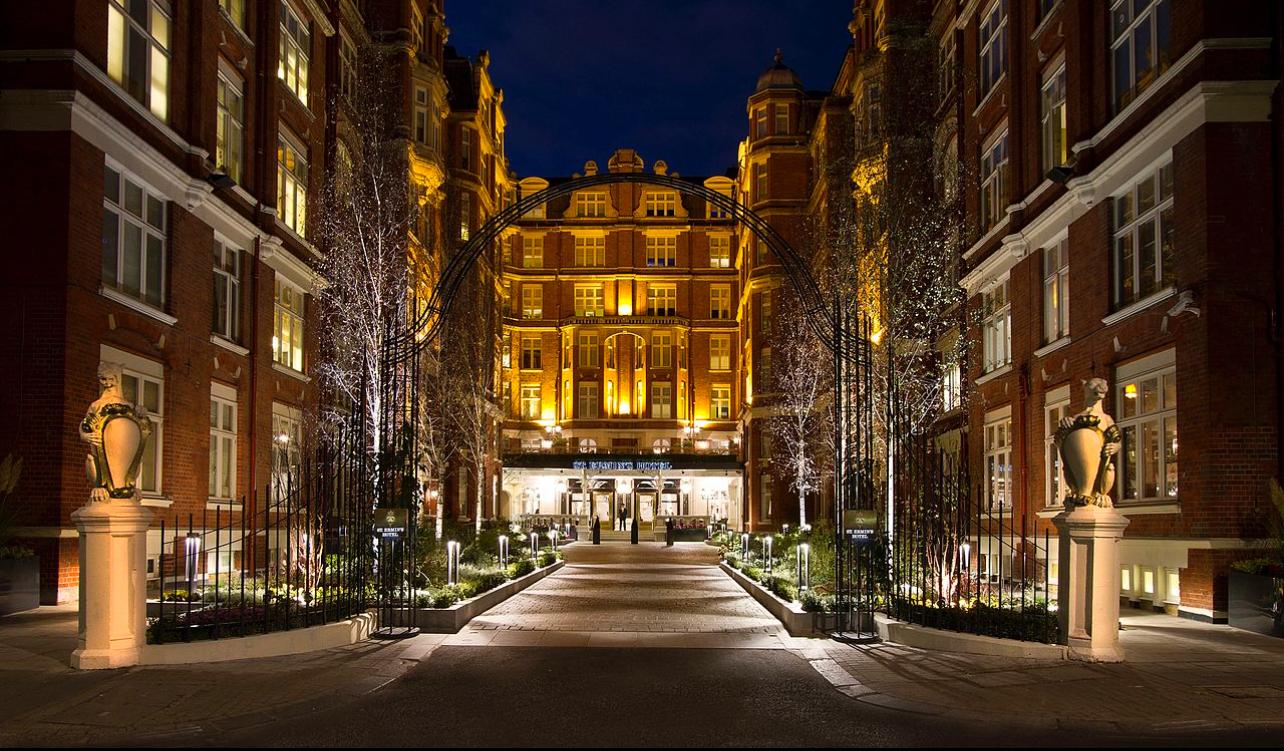
St. Ermin's Hotel in Westminster, London
Kingsway Hall, Holborn, London
68 Dukes Avenue, Muswell Hill, London
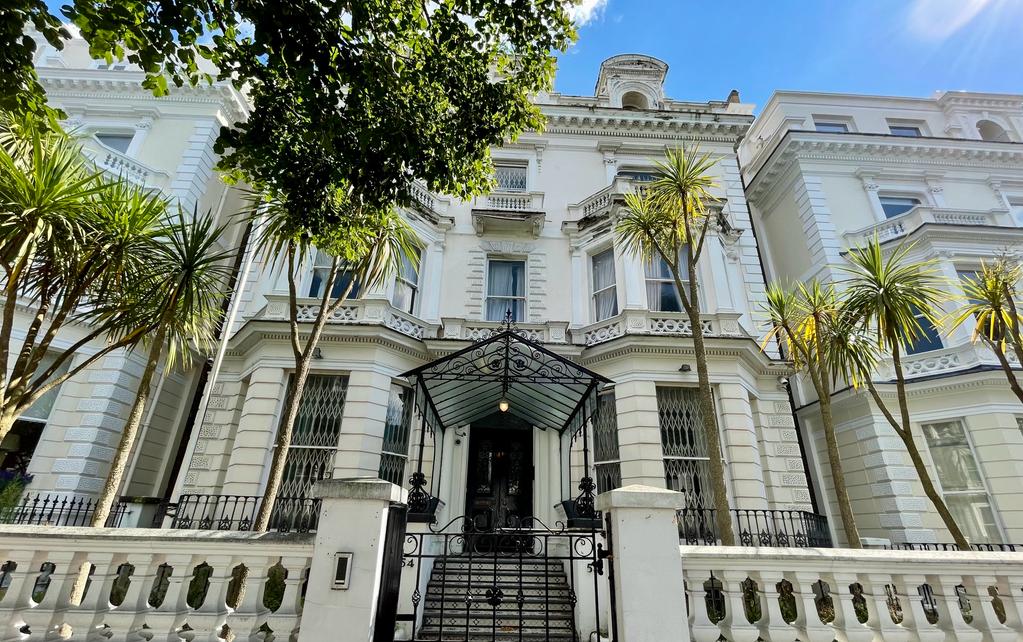
54 Holland Park, London
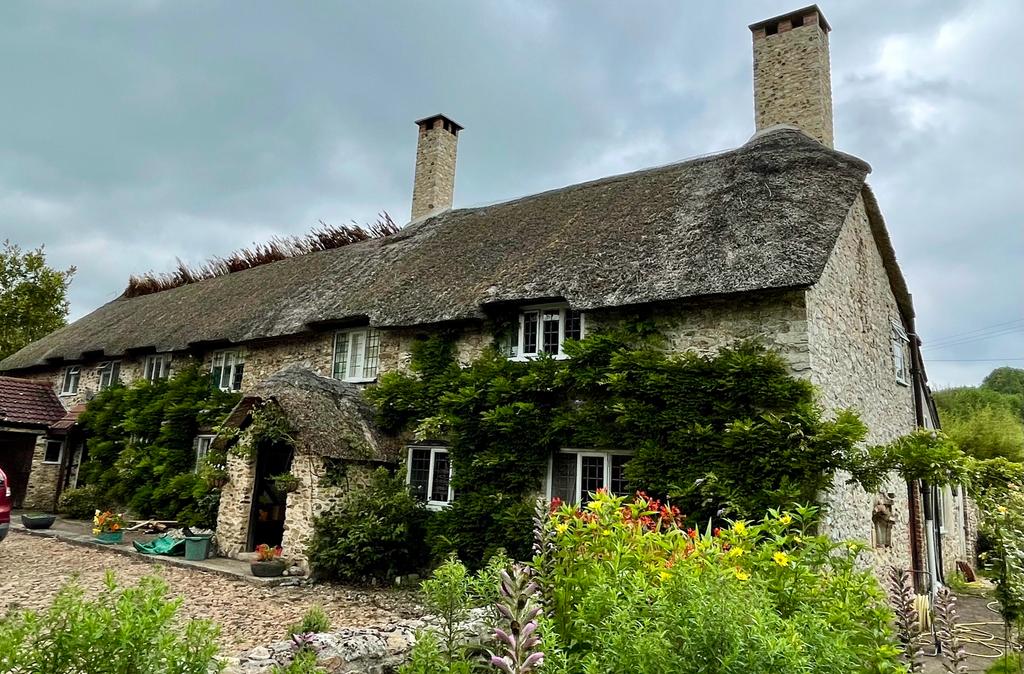
Sarada Kutir, Devon
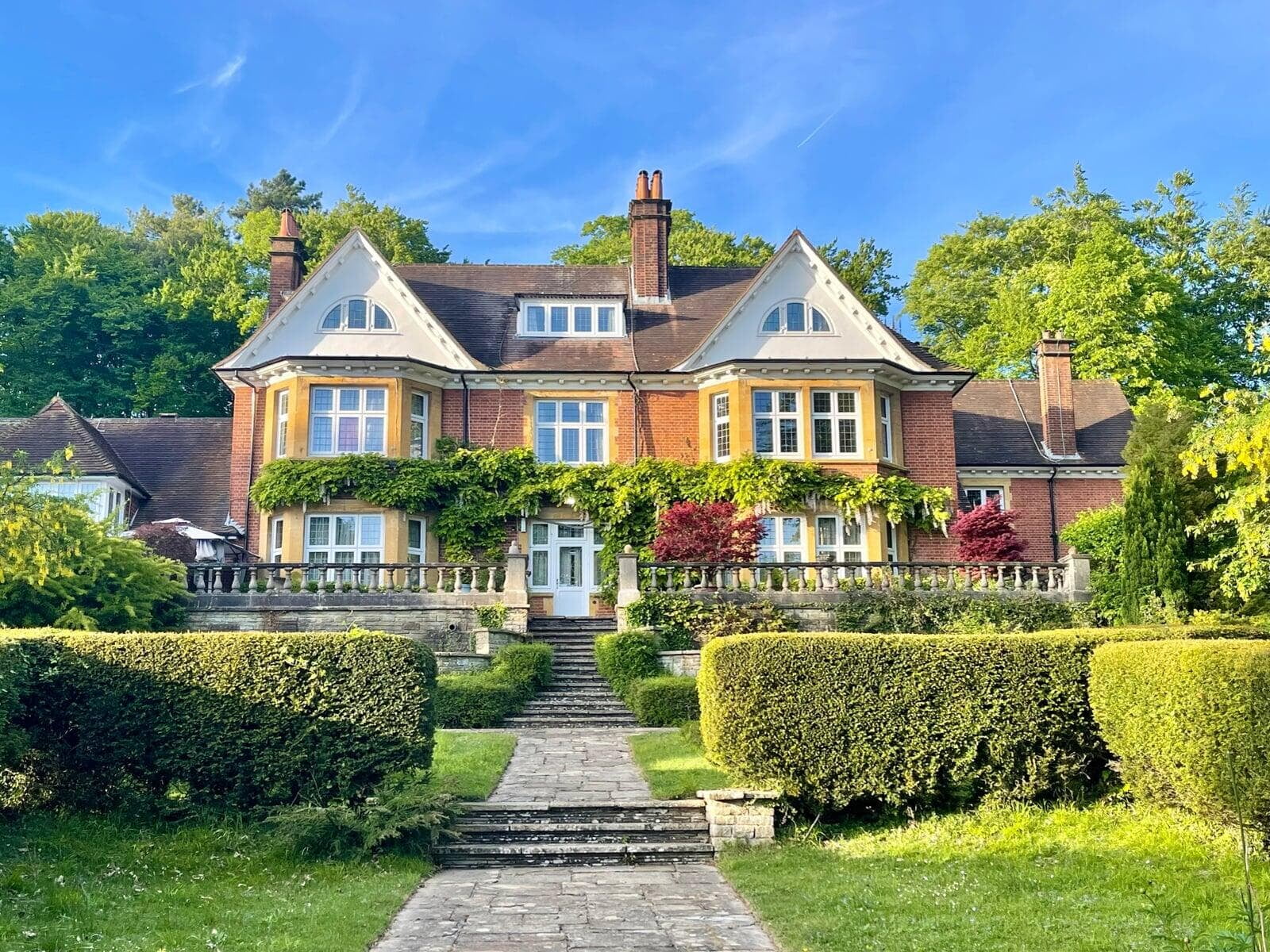
Ramakrishna Vedanta Centre, Bourne End
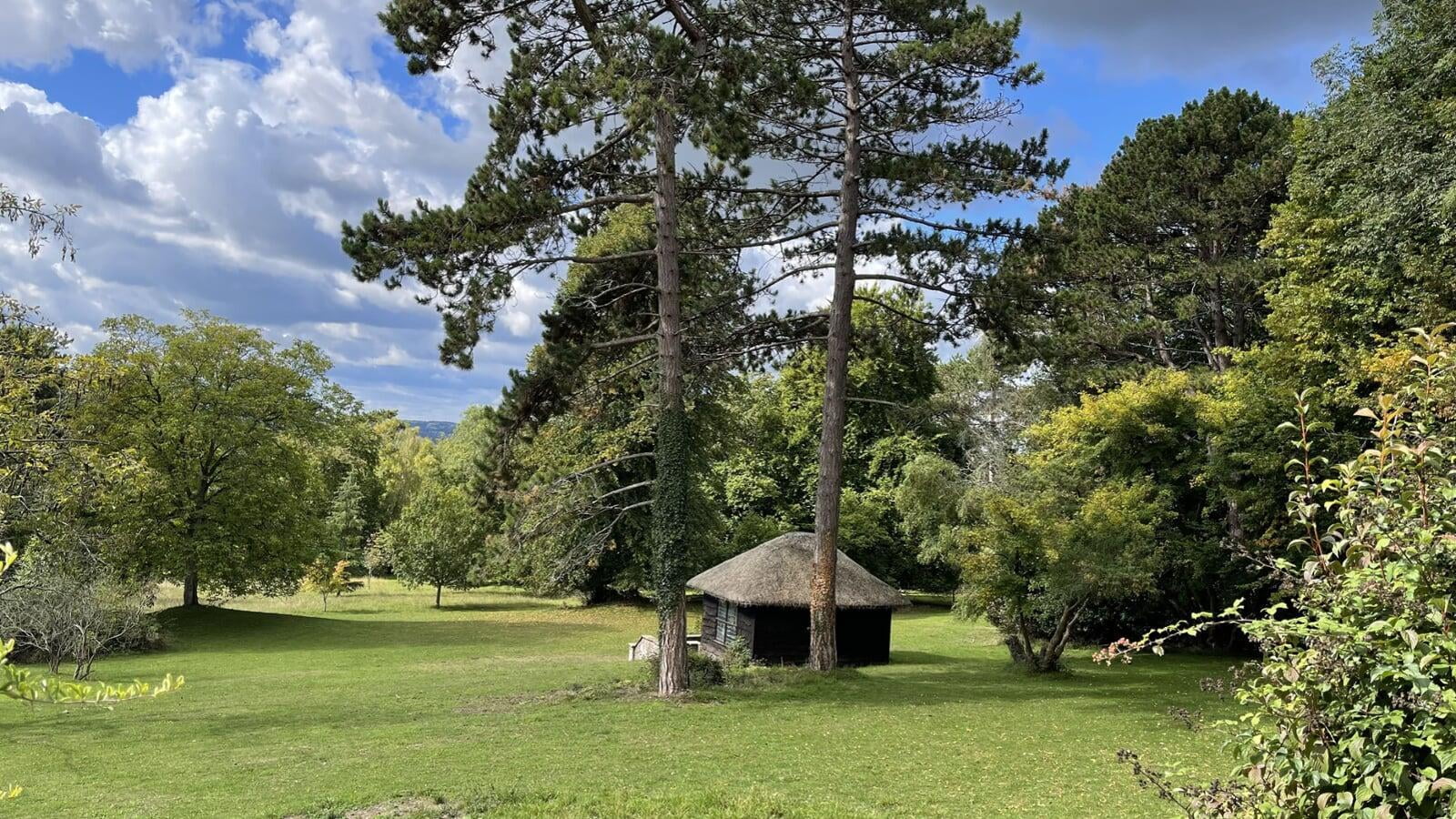
Ramakrishna Vedanta Centre, Campus, Bourne End
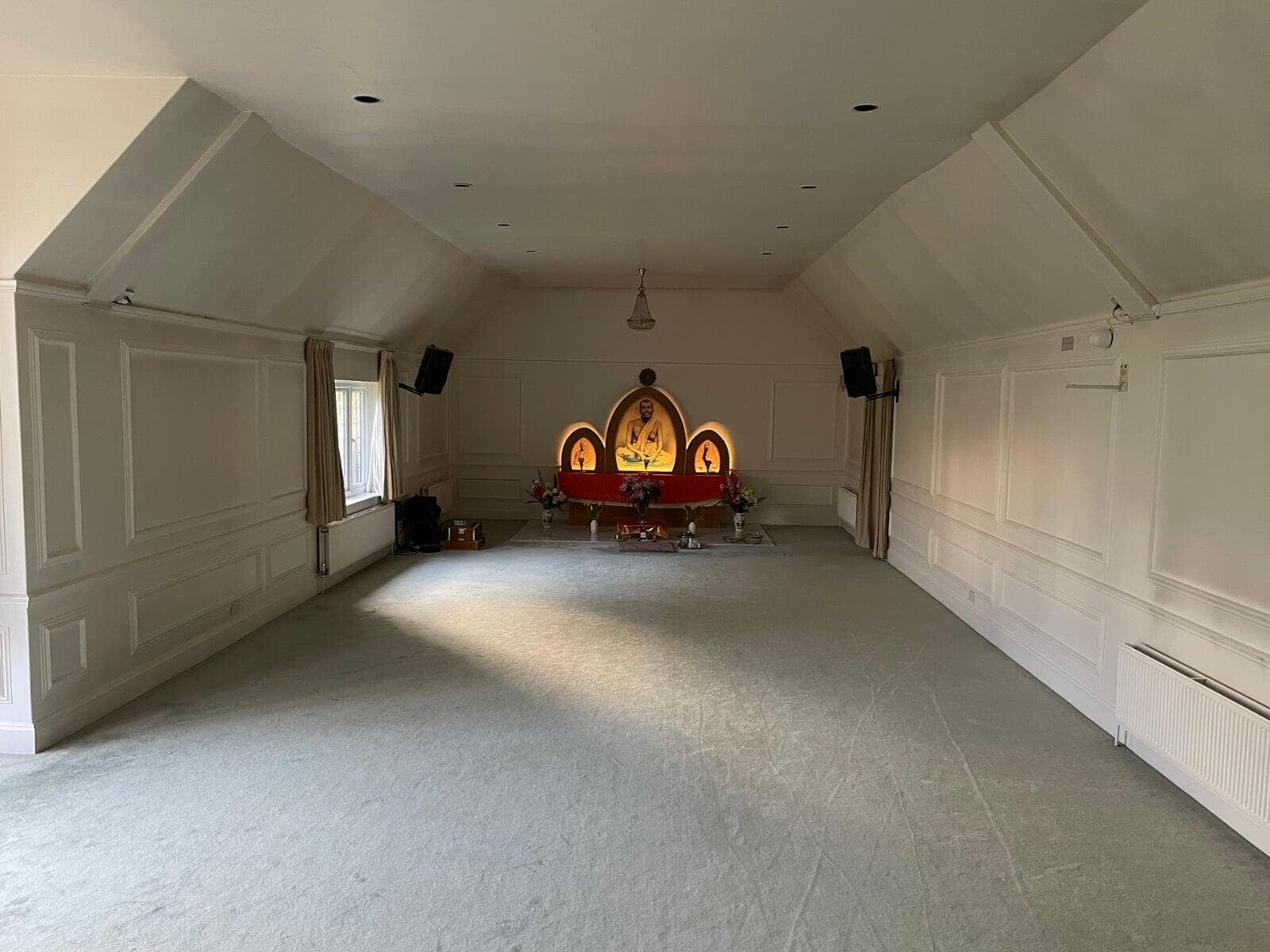
Ramakrishna Vedanta Centre, Shrine, Bourne End
Heads of the Ramakrishna Vedanta Centre, Bourne End, U.K
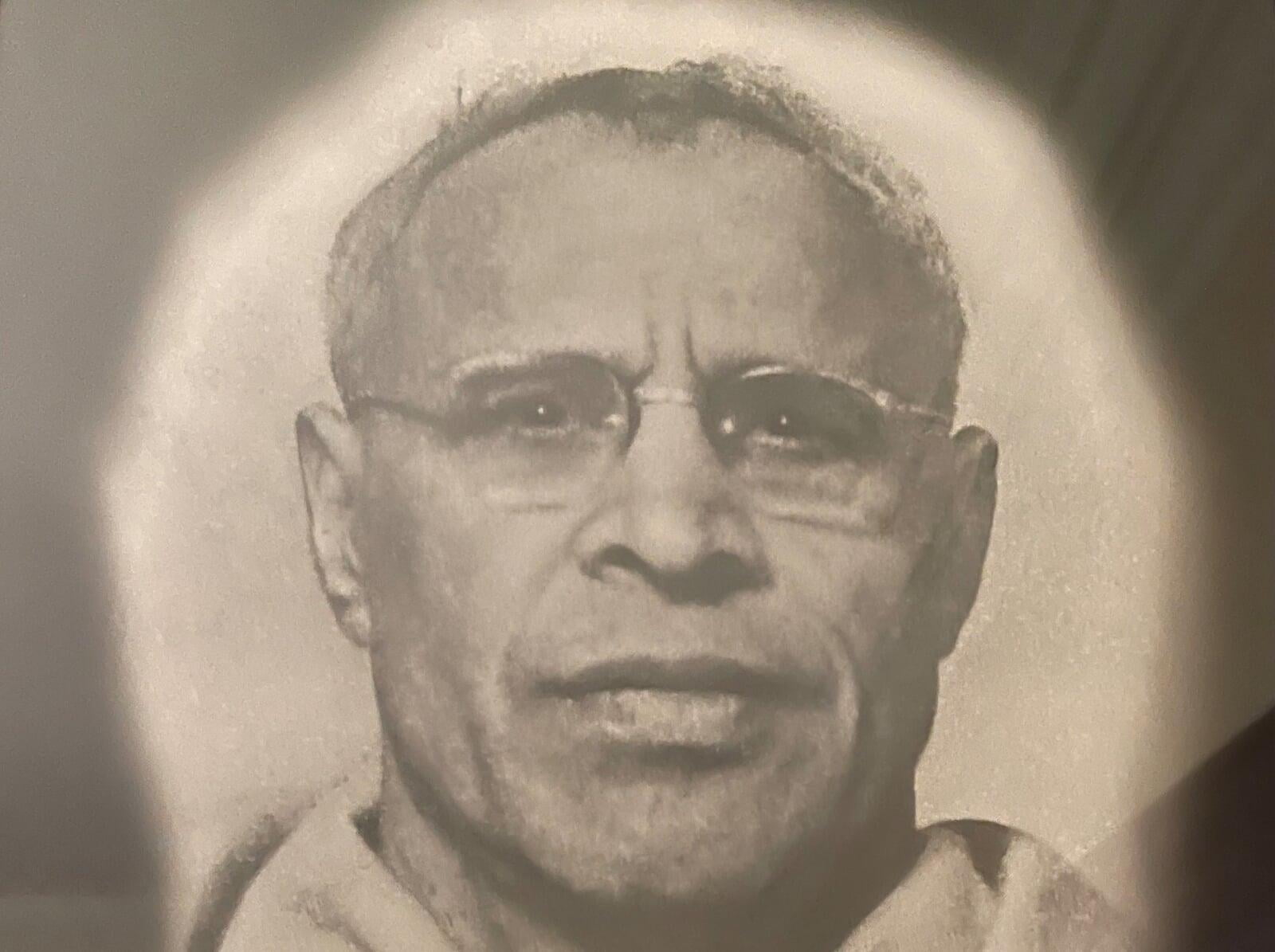
Swami Ghanananda
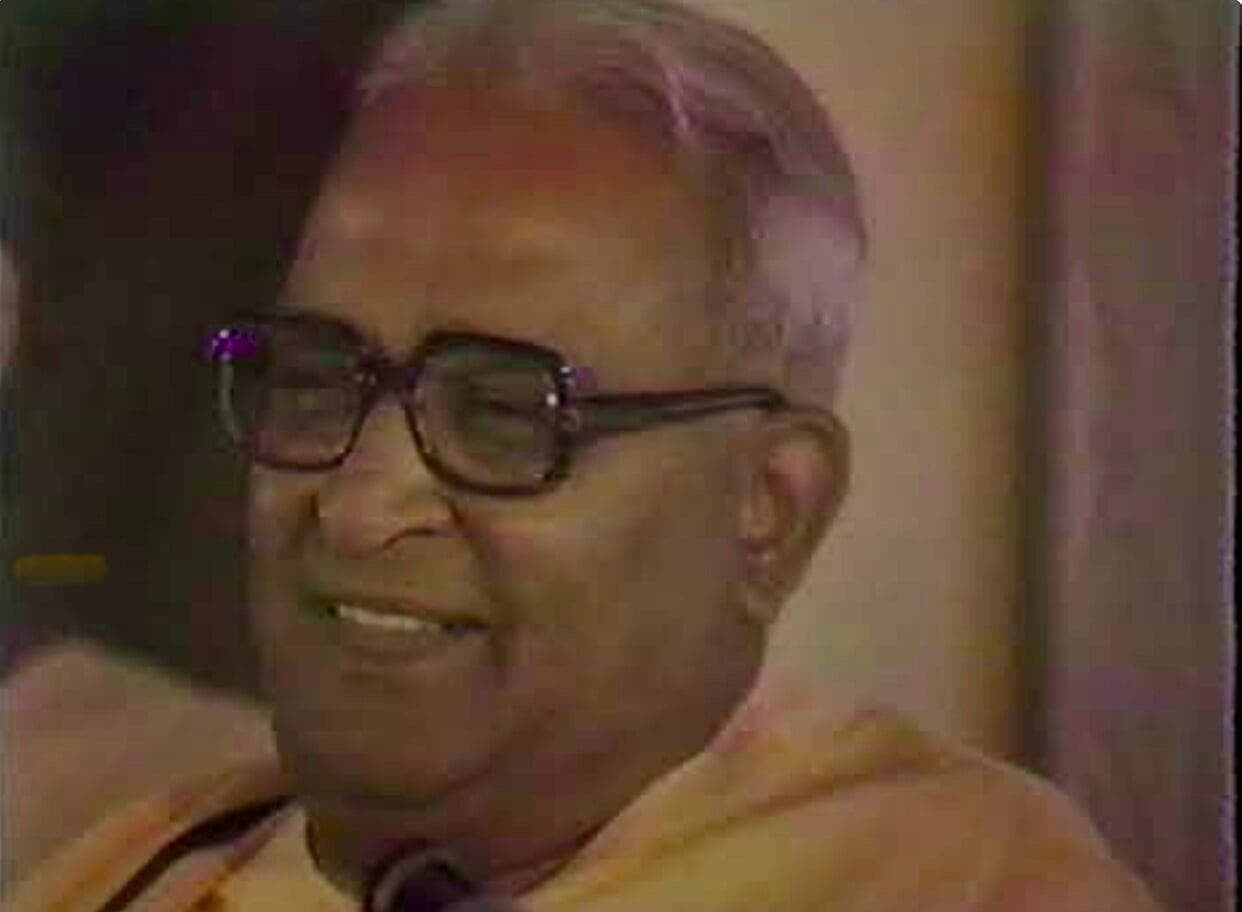
Swami Bhavyananda
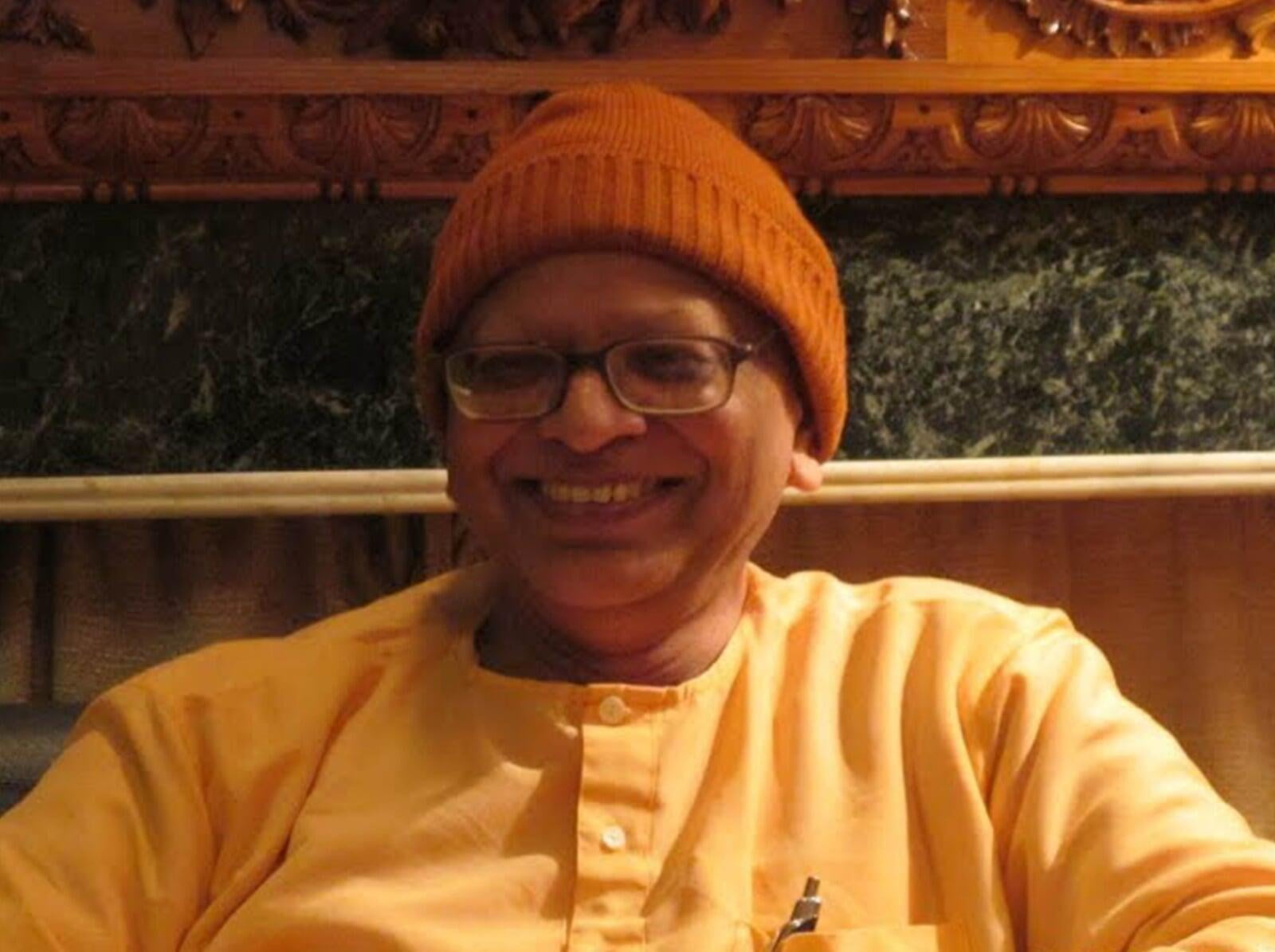
Swami Dayatmananda
